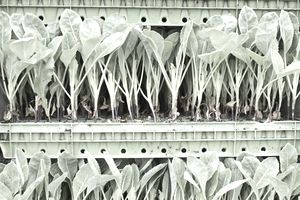
By 2050, the world’s population is expected to be almost 10 billion, and feeding this massive population will be a huge challenge. Due to industrial development and urbanization, we are losing arable lands every day. Scientists say that the Earth has lost a third of its arable lands over the last 40 years. We don’t know how much more we are going to lose in the next 40 years. Increasing food demand due to growing population along with ever decreasing arable lands poses one of the greatest challenges facing us. Many believe that vertical farming can be the answer to this challenge. Is vertical farming the future of agriculture? Is it going to play a significant role to face the ever increasing worldwide food demand? Let’s find out! What Is Vertical Farming? Vertical farming is a new practice of producing food on vertically inclined surfaces. Instead of farming vegetables and other foods on a single level, such as in a field or a greenhouse, this new method produces foods in vertically stacked layers commonly integrated into other structures like a skyscraper, shipping container or repurposed warehouse. Using the Controlled Environment Agriculture (CEA) technology, this modern idea uses indoor farming techniques. The artificial control of temperature, light, humidity, and gases makes producing foods and medicine indoor possible. In many ways, vertical farming is similar to greenhouses where metal reflectors and artificial lighting augment natural sunlight. The primary goal of vertical farming is maximizing crops output in a limited space.( ...pdf file attached for more details )
| Attachment | Size |
|---|---|
| verticle_Farming.pdf | 106.21 KB |

